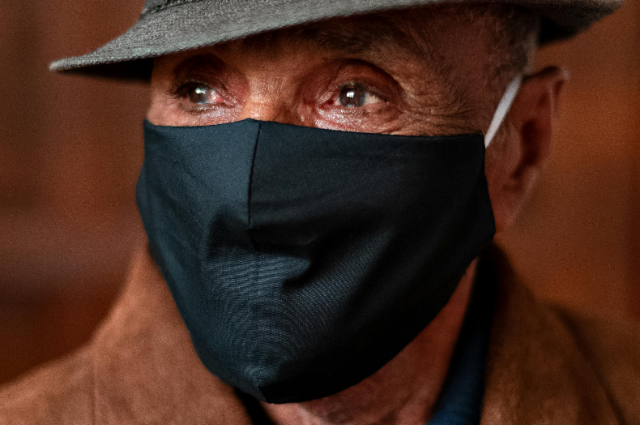
As the world slowly eased into the rhythm of post-pandemic life, few expected the ghost of COVID-19 to return with such quiet force in early 2025. For many, it was a matter of statistics—a brief spike in numbers, a few news alerts. But for one Bengaluru family, it became painfully personal.
This is the story of a 63-year-old man who lost his life in the heart of India’s Silicon Valley, becoming one of the earliest casualties of the virus’s resurgence in Karnataka this year.
The Man Behind the Mask
Not much is known to the public about the man—his name respectfully withheld for privacy—but those who knew him say he was a kind, soft-spoken individual. A retired government employee, he lived with his wife and son in one of the quieter residential pockets of Bengaluru. Like many his age, he had a medical history that made him cautious: diabetes and a mild heart condition that had required ongoing medication.
A Sudden Spiral
In mid-January 2025, when the first whispers of rising COVID-19 cases started making the rounds in Bengaluru, he began experiencing mild symptoms—fatigue, a sore throat, and a low-grade fever. “We thought it was seasonal flu,” his son reportedly told local health officials. “We never imagined it could be COVID again.”
But within days, his condition worsened. His breathing grew labored, and he was admitted to a private hospital. Tests confirmed the worst: he had contracted COVID-19.
Despite the doctors’ best efforts—including oxygen support, antiviral therapy, and management of his co-morbid conditions—he could not recover. He passed away in the early hours of a Thursday morning, leaving his family in shock and the city on edge.
A Cautionary Case
His death marked the fourth COVID-19 fatality in Karnataka since the start of the year. While health officials were quick to clarify that he had significant pre-existing health issues, the virus was an undeniable trigger in his rapid decline.
This case became a cautionary tale—not just for health authorities, but for citizens who had begun to let their guard down. “The virus hasn’t disappeared,” said one Bengaluru health official. “It’s simply waiting for the right conditions.”
The Broader Implications
Experts believe the 2025 uptick in COVID-19 cases is linked to new subvariants and low booster coverage among older populations. The deceased man had received two vaccine doses in 2021 but had not taken a booster since mid-2022.
In neighborhoods across Bengaluru, local authorities began awareness drives soon after his death. Posters reappeared at pharmacies, urging vulnerable individuals to mask up. Free health check-up camps were reintroduced in some areas, particularly those with high senior populations.
A Life, A Reminder
While headlines often blur into each other, the story of this one man serves as a stark reminder: behind every statistic is a family, a story, a voice now silenced. In his quiet passing, he reminded the city that the battle against COVID-19 is not just one of science and policy, but of memory, vigilance, and compassion.
Other Cases:
- Ray of Hope: Jaipur's Newborn
Amidst the somber news, a 31-year-old COVID-19-positive woman in Jaipur delivered a healthy baby at the government-run Mahila Chikitsalaya hospital. Conceived through in vitro fertilization, this case marked the first instance in the city that year of a COVID-positive woman delivering a healthy baby, offering a glimmer of hope during challenging times.
- The Youngest Fighters: Kolkata's Children
In Kolkata, a seven-month-old baby was among 60 new COVID-19 cases reported in West Bengal. The infant exhibited symptoms like high fever, sneezing, and refusal to feed, leading to hospitalization at Peerless Hospital. Tests confirmed COVID-19, and the child is under supportive care, recuperating well. Medical professionals noted an increase in younger children with respiratory symptoms, emphasizing the importance of consulting doctors for persistent symptoms in children.
To prevent further escalation and reduce mortality:
For the Public:
- Mask Mandates in public transport, hospitals, and closed, crowded areas.
- Vaccination Boosters for seniors and immunocompromised individuals.
- Isolation and Testing for anyone showing symptoms.
- Hygiene Reinforcement. (hand washing, sanitizers, and avoiding unnecessary physical contact)
For Authorities:
- Surveillance & Genome Sequencing to monitor mutations and variants.
- Reviving Testing Infrastructure, especially RT-PCR in symptomatic zones.
- Awareness Campaigns focusing on high-risk populations and school-going children.
- Preparedness of Hospitals with COVID-19 wards on standby.
For Healthcare Professionals:
- Update protocols for variant-specific treatment.
- Monitor post-COVID complications in high-risk patients.
- Provide mental health support to families affected by fresh losses.
- The Shocking Rise of “Silent Spreaders”: Children Under 2 Among the Infected.
One of the most alarming developments in the 2025 COVID-19 resurgence is the increasing number of infants and toddlers testing positive for the virus.
At Kolkata’s Peerless Hospital, a 7-month-old baby became one of the youngest confirmed cases in West Bengal. Admitted with high fever, sneezing, and feeding refusal, the infant’s diagnosis shocked even experienced pediatricians. Doctors have since reported a rise in respiratory distress cases among infants, many of whom test positive for COVID-19, despite families reporting no known exposure.
Even more startling: in several of these cases, the parents were asymptomatic, highlighting the role of silent carriers and the virus’s ability to spread within homes undetected.
According to a pediatrician at the hospital:
“We are seeing infants come in with severe symptoms like viral pneumonia. The parents often don’t even realize they’ve transmitted anything—they think it’s just a seasonal cold.”
This shift in demographics, where the very youngest and oldest are simultaneously at risk, has prompted emergency protocols in pediatric wards and renewed focus on household precautions.
These stories from across India in 2025 highlight the ongoing challenges posed by COVID-19. They serve as poignant reminders of the virus's reach and the importance of continued vigilance, especially for vulnerable populations. As the nation navigates this phase, the collective experiences underscore the need for resilience, compassion, and adherence to public health guidelines.
